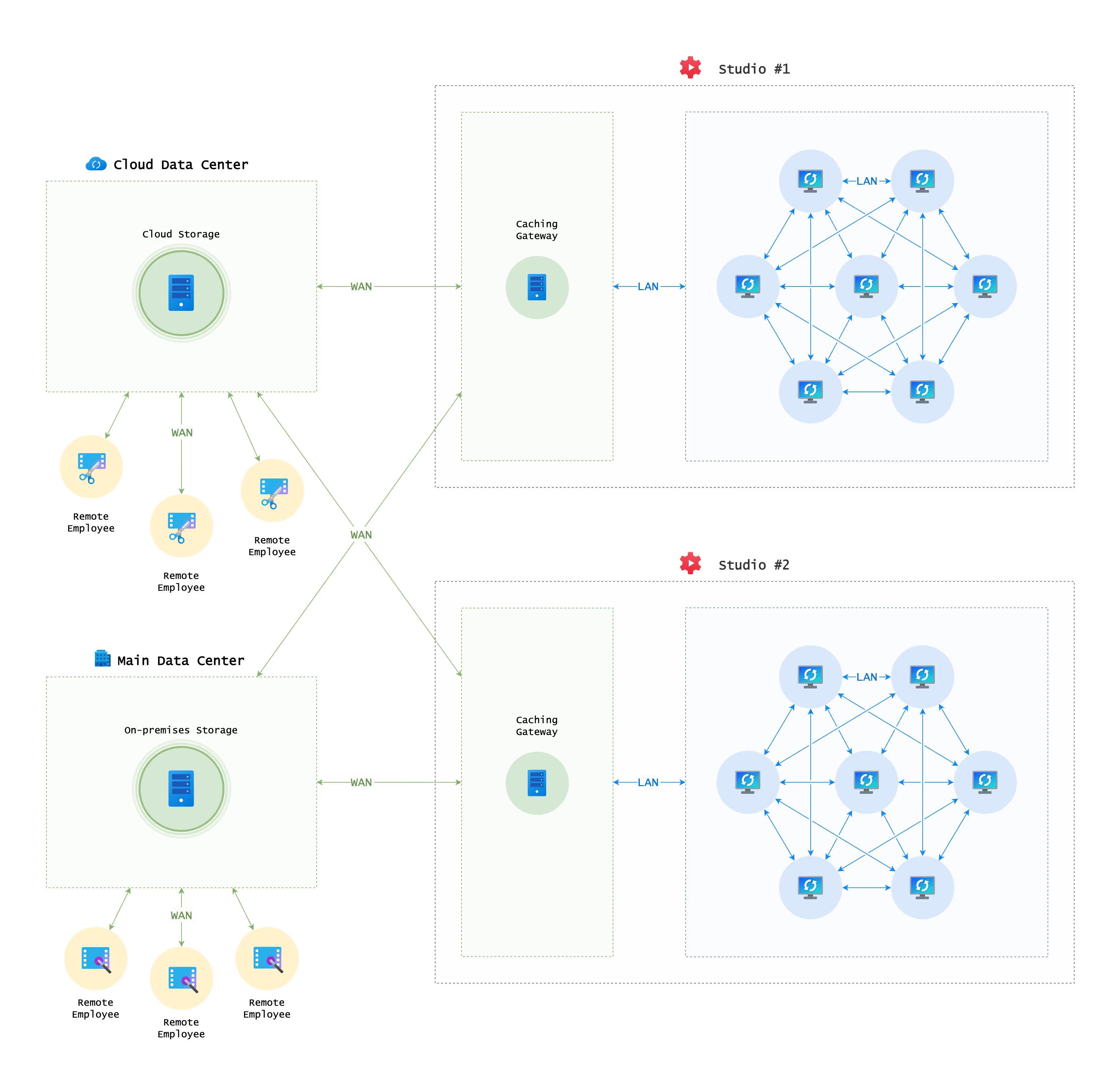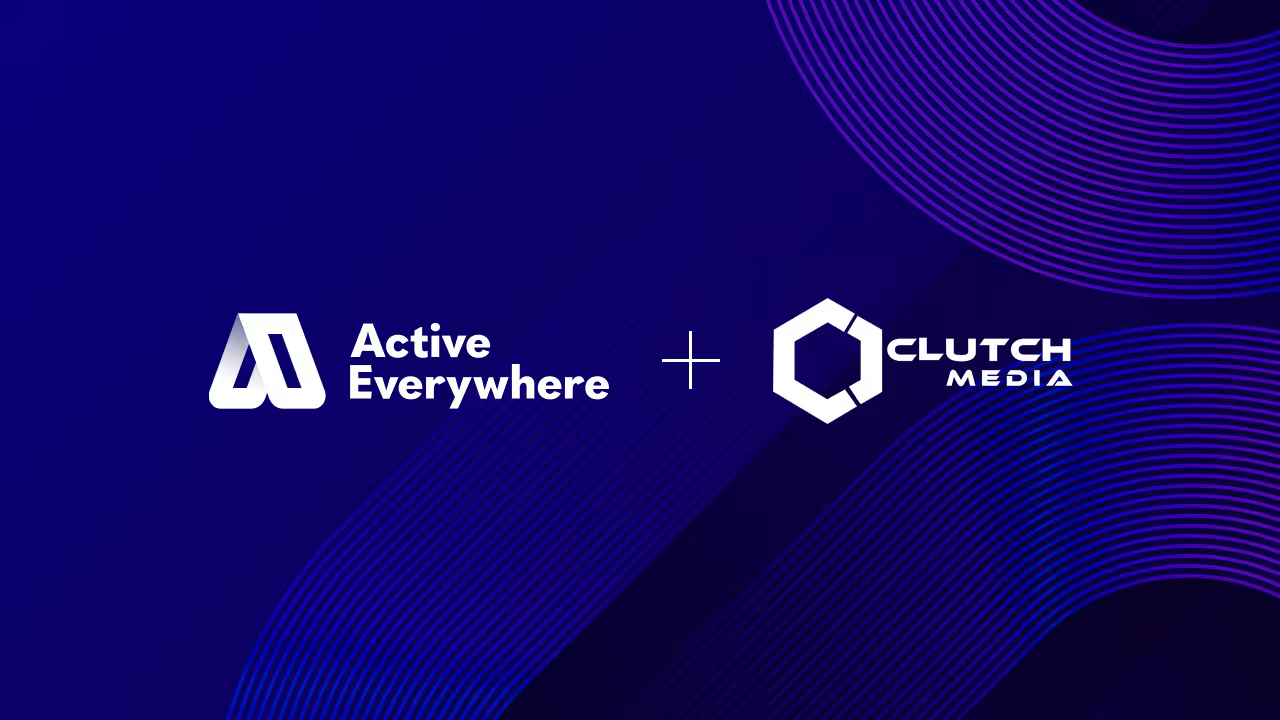How Shep Transformed Data Management from a Logistical Burden to a Competitive Advantage
When the film studio faced the reality of managing 4TB projects across a distributed workforce, one challenge stood out: removing the burden of data management from freelance editors while maintaining security.
Shep is a video and film studio based in Seattle, Washington. It specializes in customer stories and product marketing content for major tech companies like Microsoft and Amazon, as well as narrative film projects, including the critically acclaimed sci-fi western Prospect starring Pedro Pascal.
When production demands grew from 10 to 20+ projects annually, each generating up to 4 terabytes of data, Shep faced a critical decision: hire dedicated data management staff or implement systems that could scale with their distributed workforce. The choice would determine whether they could maintain their flexible, freelance-driven production model while meeting enterprise security standards.
Shep's journey highlights the delicate balance media production companies must strike between operational flexibility and data security in an increasingly distributed work environment.
The Challenge of Distributed Data Management
Shep discovered that their manual backup processes created multiple points of failure:
Editors were responsible for maintaining redundant backups on their own systems
Projects often had a backlog waiting for proper archival
Physical drives needed to be transported between locations for redundancy
No centralized monitoring or enforcement of backup policies
The risk of data loss was distributed across freelance contractors
“We had a backlog of five projects at a time that weren't getting duplicate backups, so we were making sure the editors held them,” Brice explained. “That was putting extra work on them. I don't know how many times the editors were actually having duplicate backups.”
Two incidents drove home the need for change. First, a project was accidentally deleted during what seemed like a routine backup process, only to be requested by the client over a year later. While technically outside their data retention policy, the situation created an uncomfortable client conversation.
The second wake-up call came during the production of Prospect, a $4 million feature film with 40 shoot days and crews of 80 people.

“We got exposed to what happens when you're dealing with a project that is $4 million, 40 shoot days, crews of 80 people, and really studio-level standards,” Brice said. “It was like, 'Oh, this is how a project of that scale is managed in order to reduce risk.”
The challenge was implementing enterprise-level data management without requiring a traditional centralized office structure.

Workflow Gains Through Automated Distribution
Rather than forcing editors to work from a central location or rely on manual processes, Shep implemented Resilio Active Everywhere to create an automated, distributed backup system:
Editors work with local files as they always have, maintaining familiar workflows
Automatic synchronization occurs in the background to multiple RAID systems
Projects exist in five locations simultaneously, with time-based versioning
Central monitoring eliminates guesswork about backup status
No additional workflow burden is placed on freelance editors
“Really what it means on the ground for us is we have a tool that an editor on our staff can manage, and it's just part of her job. It's not her whole job. It's maybe 15 to 20% of her job,” Brice noted.
The Technical Architecture
Instead of investing in expensive server infrastructure, Shep deployed a cost-effective system using consumer-grade components.
Local-first editing: Editors work directly from SSDs and standard hard drives, maintaining the performance they expect without network dependencies.
Automatic redundancy: Files sync to multiple RAID systems—one in Brice's basement and one at their Seattle office—creating geographic separation without manual intervention.
Flexible storage tiers: The system accommodates different project sizes and storage types, from SSDs for travel work to larger drives for high-volume projects.
Time-based versioning: Multiple snapshots at different intervals (hour, day, week) provide protection against errors that propagate through the system.
“It gives us the flexibility to use the hard drives that work best for the project,” Brice explained. “Sometimes they're just a standard hard drive, and sometimes they're mirroring. They all sync to the system.”
Bandwidth Reality in Video Production
One of the key insights from Shep's implementation addresses the ongoing debate about cloud-first workflows in video production.
“The big thing with Resilio is, unique to video production, we're dealing with massive files,” Brice said. “They're too big for the bandwidth we have in just standard everyday homes in the US, where you cannot be putting two, four terabytes up and down constantly because our pipes just aren't big enough.”
Even with gigabit fiber service, the reality of residential internet throttling during peak usage makes cloud-only workflows impractical for large video files. The hybrid approach allows teams to leverage cloud services when appropriate while maintaining local performance for day-to-day editing.
Cost Control Through System Design
The implementation eliminated the need for dedicated data management staff while scaling production volume.
Reduced personnel costs: No full-time assistant editor needed for backup management
Prosumer hardware: Avoided expensive server infrastructure by using sub-$10,000 RAID systems
Flexible capacity: Easy to scale storage without re-engineering the entire system
Eliminated transport costs: No more shipping drives between locations for redundancy
“We were doing 10 projects a year. Now we're doing 20 plus projects a year, and we haven't increased any of the hours for data backups. That is paying for Resilio at this point, easy."Brice Budke, President, Shep Films
Global Talent Access
The system has enabled Shep to expand its creative team anywhere in the world.
Regional flexibility: Editors no longer need to commute to the Seattle office, saving 1-2 hours daily and enabling flexible schedules.
Talent retention: When team members relocate, projects can continue seamlessly regardless of their new location.
Skills-first hiring: Access to specialized customer story editors globally rather than being limited to local talent.
International collaboration: For their narrative project The Fringe, the system supports VFX artists in London, modelers in the Netherlands, and collaborators across multiple US states.
“If everyone has access to all the files and you're only sandboxing them based on where you want people to go, we can start VFX really, really early in the pre-production process because all the files are there.”
Future-Proofing for AI Integration
Looking ahead, Brice sees the centralized data architecture as enabling new AI-powered workflows.
Research acceleration: Using LLMs for faster client and industry research ahead of customer story interviews.
Asset discovery: Potential for AI to search through archived footage. For example: "Go look through everything, find me a plate of a screen," eliminating manual searches through years of projects.
Look development: Using tools like Midjourney for storyboarding and concept work, with centralized storage making assets immediately available for AI processing.
“A good system and a good organized house allow you to pounce on future opportunities," Brice explained. "I really like being nimble and flexible.”
"My belief is, in the general sense, Resilio or everything else, a good system and a good organized house allows you to pounce on future opportunities. And I really like being nimble and flexible."Brice Budke, President, Shep Films
Key Lessons for IT Professionals
Shep’s experience offers several insights for IT teams supporting media production.
Start with workflow reality: Don't force editors to adapt to new interfaces or processes that conflict with creative workflows.
Plan for geographic distribution: Assume your talent will be distributed and design systems that perform well regardless of location.
Automate enforcement: Manual policies will fail at scale. Build enforcement into the system architecture.Balance cost and capability: Prosumer hardware with intelligent software can outperform expensive traditional solutions.
Design for flexibility: Storage systems should accommodate different project types and sizes without requiring re-architecture.
Looking Forward
As Brice and Shep prepare for larger narrative projects and continued growth in commercial work, their infrastructure approach has become a competitive advantage rather than a cost center.
“The big one for us is the flexibility and being active everywhere,” Brice concluded. “A good system allows you to pounce on future opportunities, and I really like being nimble and flexible.”
The company now views its data management not as a necessary evil but as an enabler of creative possibilities—from working with global talent to implementing cutting-edge AI tools, all while maintaining the security and reliability that Shep’s clients expect.
Featured Resources

Resilio for Media & Entertainment
Your production team needs high-performance file synchronization and media access to keep projects running on time—around the world. Get active everywhere with Resilio.

Unlock the Power of Resilio Active Everywhere Platform with Clutch Media
How to address various data management challenges in media and entertainment, as well as other industries requiring efficient, secure, and flexible file transfer solutions.

Remote and Hybrid Work Solutions for Teams
Resilio enables fast low-latency access to files for applications, workflows, and end-users. Your files are there when you need them most, working under deadlines or on a big project.

